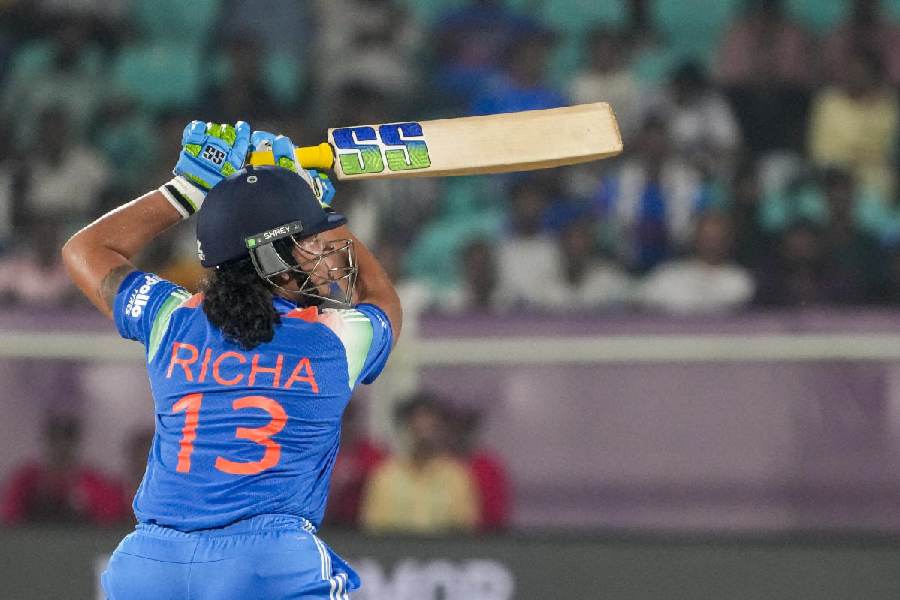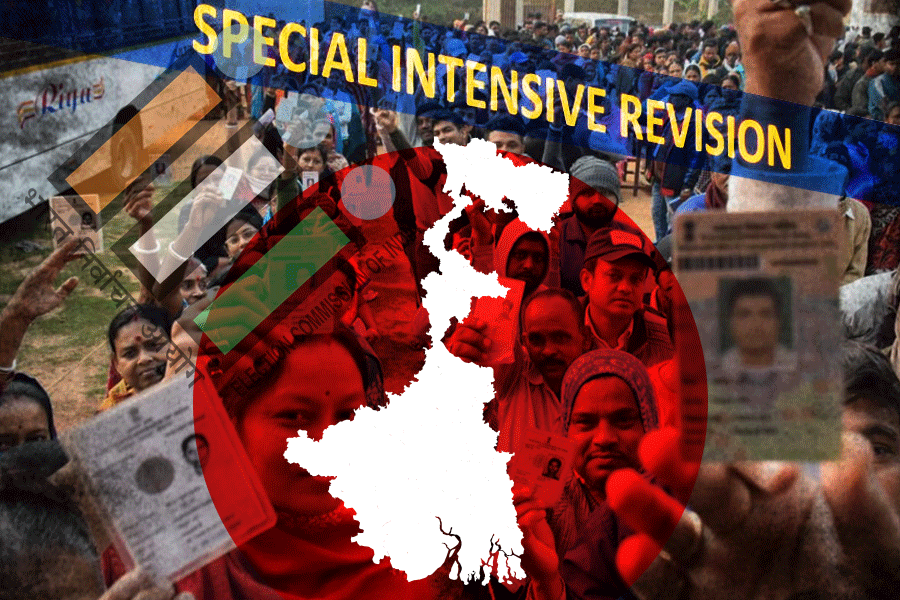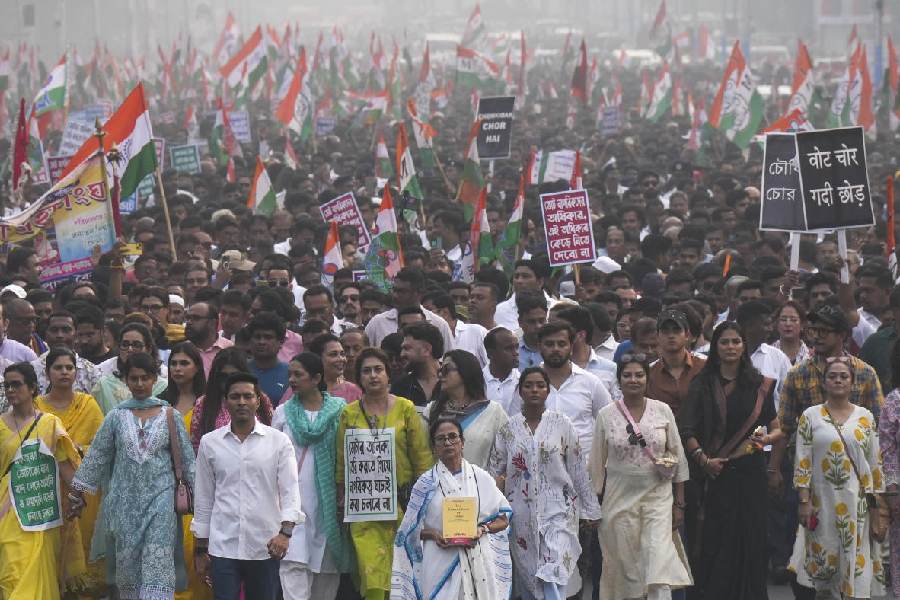
In their home in Kensington in London, the Roy family heard the news of the outbreak of the war with mixed feelings. The street was full of cheering men and women. Many of them had gathered outside the gates of Buckingham Palace and were returning home after seeing the King, Queen and the Prince of Wales wave to them from the balcony. It felt like a street party.
But Lolita Roy was worried. The 49-year-old mother of six did not know what uncertainties the war would bring. She was the wife of Piera Lal Roy, eminent barrister and director of public prosecutions in Calcutta. The family had moved to London in 1901 so the children could gain a proper English education. Piera Lal Roy, born into a wealthy land-owning family from Barisal (now part of Bangladesh) believed that since Indians had to live under British rule, they should learn their ways.
In Calcutta, he would often take his eldest son, Poresh, with him to the high court, father and son riding out in their carriage on Calcutta's broad tree-lined streets. He would also take him for a walk every day. Piera, or "Parry" as he was known, believed in physical fitness and taught his boys cycling and horse riding. A governess was engaged to school the children in English manners and etiquette. When the family moved to London, the boys were sent to St Paul's School for Boys in Hammersmith and the girls to St Paul's Girls' School.
While elder brother Poresh was becoming the school's boxing champion, Indra Lal "Laddie" Roy was playing rugby and captaining the swimming team. The boys had to swim a mile every day. The refined Bengali family lived in a large house in Glazbury Road. Music could often be heard wafting out from the living room as the family listened to the songs of Tagore as well as to Western classical music. While Piera Lal continued to work in Calcutta, it was the sari-clad Lolita who was in charge in London. The news of the war provoked an immediate and animated family discussion.
Fifteen-year-old Indra knew at once what he wanted to do: join the Army. So did elder brother Poresh who had just graduated from Cambridge. "We were keen to prove that the non-martial Bengali could fight as well as any other soldier," said Poresh. Indra signed up for the school cadet force at St Paul's. The teenager was determined to live his dream. If the war was to go on, he knew he wanted to play his part in it. Lolita was proud of her sons. They had grown up to be true Englishmen, dedicated to King and country.
****
Even while he was in school, Laddie wrote to the War Office sending a drawing of a trench mortar that he had designed complete with notes about its advantages, which included "rapidity of firing". He had won a scholarship to Oxford, but the bright teenager had only one dream: flying a fighter aircraft. Laddie applied to the Royal Flying Corps but was rejected by the military optician on grounds of "defective" eyesight.
So determined was he to become a pilot that he sold his motorbike and paid for an alternative opinion from one of the country's leading eye specialists. Laddie cleared the eye test, the decision was overturned, and on 4 April 1917, he joined the Royal Flying Corps. By July, the eighteen-year-old was commissioned as a second lieutenant and posted to Vendome.

Laddie's ready smile, his youthful cockiness and verve had already made him popular. His only ambition was to knock the German fighter planes out of the skies. He was soon proudly flying the Curtiss, the Sopwith Camel, and the Avro, whirling in the skies doing daring loops far beyond his age and experience.
On 6 December 1917, while on a flight over France Laddie's plane was shot down by a German fighter and crashed in no-man's land. He was taken to the local hospital where he was left for dead.
But the young Bengali regained consciousness, banged on the door of the morgue and woke up the terrified hospital staff calling out in his school-boy French. He was immediately sent back to Britain for treatment. While recovering, Laddie made numerous sketches, replacing his passion for sketching sports cars with that of drawing aircraft.
Following his accident, Laddie was declared unfit to fly. But the boy, who had come back from the dead, would not take "no" for an answer. He watched the other officers take off on their planes and was determined to return to the skies. With all the stubbornness of a teenager, Laddie continued to pester his officers until they finally gave in. In June 1918 he cleared the medical test and joined No. 40 Squadron returning to France as temporary lieutenant. This time he was determined to make his mark.
Under the guidance of Captain George McElroy, Laddie trained hard and soon proved to be an excellent fighter pilot. On July 6 he brought down his first German plane over Arras in Northern France. Standing in the mess, cheered by his colleagues, Laddie was on top of the world. There was no stopping him after that. Between 9 July and 19 July, he knocked down nine German aircraft, becoming India's first flying ace in just over 170 hours of flying time.

On 22 July 1918, only four months before the end of the war, Laddie flew a daring sortie over the trenches in Carvin in France. Almost immediately, his plane was attacked. Four German Fokker planes surrounded him and a hard battle followed. Not ready to be cornered, Laddie fought back bravely, taking down two German planes one after the other. But in the heat of combat, his plane was shot, bursting into flames and coming down over German-held territory. It was to be his final flight. Laddie was only nineteen. In the wreckage of the aircraft lay the body of a young boy from Bengal who had wanted to prove that Bengalis were good fighters.
The news was conveyed to his heartbroken mother in London. Laddie's commanding officer wrote to Lolita: "From the time he came to the squadron, his one aim of life was to shoot down the Huns and through his skill as a pilot and wonderful dash, he succeeded in bringing down nine enemy machines. For the time he was here, that is a wonderfully fine record. I am sure he was very happy here; he was admired by all men and officers in the squadron and was very popular in the mess."
It was only in September 1918 that the RAF confirmed Indra Lal Roy's death and made it official. Three days later he was awarded the Distinguished Flying Cross for his bravery, becoming the first Indian to win the DFC. The citation read: "A very gallant and determined officer, who in thirteen days accounted for nine enemy machines. In these several engagements he has displayed remarkable skill and daring, on more than one occasion accounting for two machines in one patrol."
Flight magazine carried his obituary: "He was one of a band of young Indians studying here who, precluded until recently from any chance of obtaining commissions in the Army, found scope for striking a blow for the Empire in the new arm of our forces."
Even the Red Baron, the famous German flying ace, paid tribute to the brave Indian teenager and dropped a wreath from the skies on the spot where Laddie fell.
His body was found and buried in Estevelles Communal Cemetery in France. His grave bears an inscription in French and Bengali. The Bengali words read: " Maha birer samadhi; sambhram dekhao, sparsha koro na" (A valiant warrior's grave; respect it, do not touch it).
Excerpted with permission from For King and Another Country, Indian Soldiers on the Western Front by Shrabani Basu; Published by Bloomsbury; Price: Rs 599. (To be released in India on November 30, 2015)










